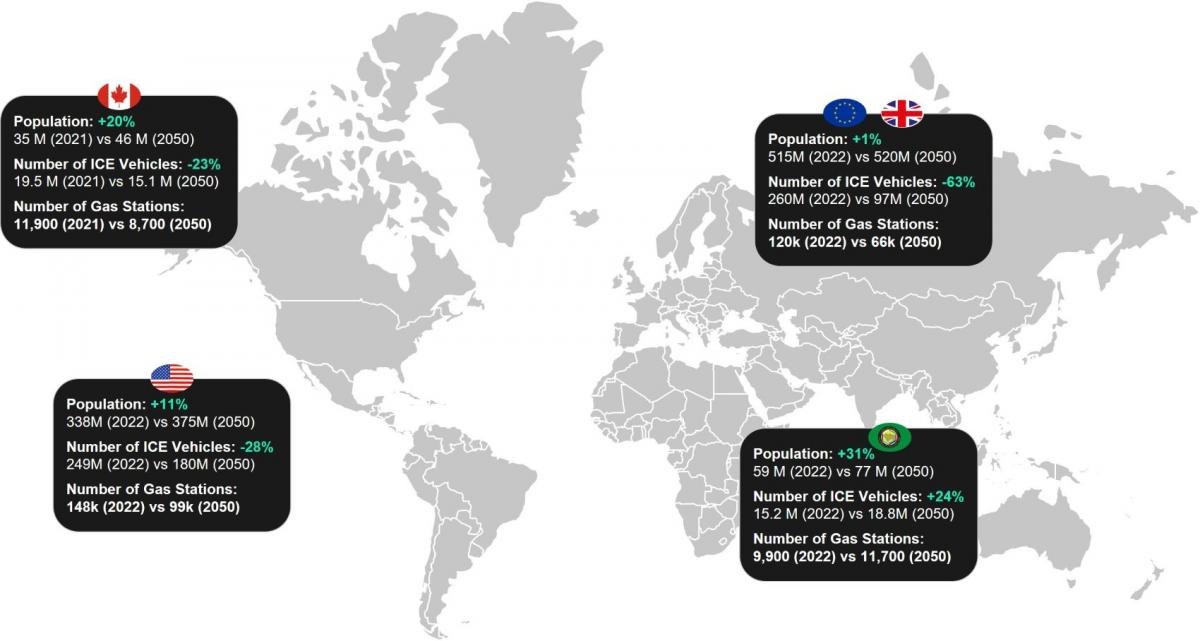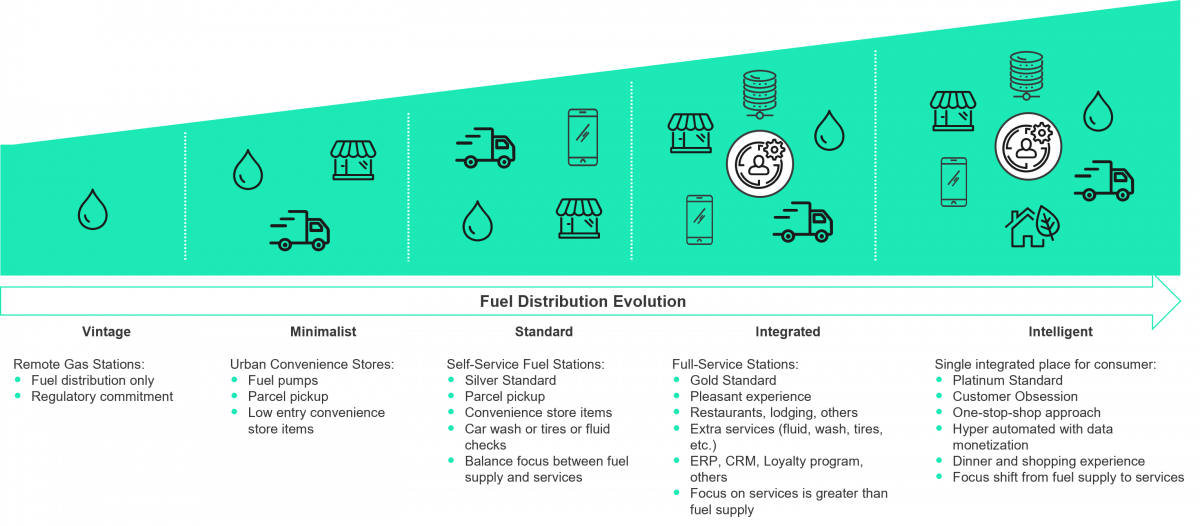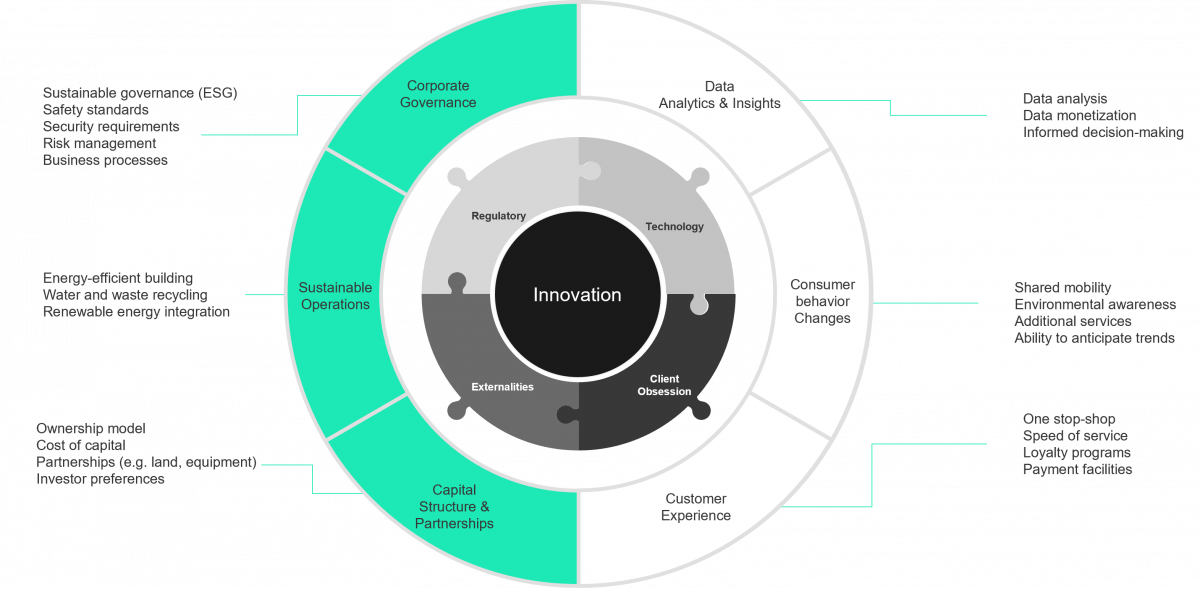Investments in Decarbonization: A strategic lever…

Focusing on regulatory, technological and behavioral long-term trends, Sia Partners has analyzed how global fuel consumption will evolve over the next 30 years.

The modern fuel industry traces its roots back to the late 19th century with John D. Rockefeller and the establishment of Standard Oil. In 1870, Rockefeller founded Standard Oil in Ohio, which quickly grew to dominate the American oil industry. Through aggressive business tactics, strategic acquisitions, and a focus on refining efficiency, Standard Oil controlled nearly 90% of U.S. refineries and pipelines by the 1880s.
Initially, kerosene was the primary product derived from crude oil, used mainly for lighting lamps. The invention of the automobile and the subsequent development of the internal combustion engine in the late 19th and early 20th centuries transformed gasoline into a valuable commodity. As car ownership surged, so did the demand for gasoline, leading to the proliferation of gas stations.
In 1911, the U.S. Supreme Court found Standard Oil in violation of antitrust laws and ordered its breakup into 34 separate companies. Some of these companies, like Exxon, Mobil, and Chevron, would grow to become major players in the global oil market. The industry continued to expand internationally, with discoveries of large oil reserves in the Middle East, Africa, and South America.
By the mid-20th century, the environmental impact of fossil fuels became increasingly apparent. Air pollution, oil spills, and the burgeoning concern over climate change led to stricter regulations on fuel production and consumption. Governments introduced higher taxes on gasoline and set emissions standards for vehicles, prompting the automotive and oil industries to innovate.
Technological advancements and regulatory pressures drove the development of alternative fuels. Ethanol, derived from corn and other plant materials, emerged as a renewable fuel additive. Biodiesel, made from vegetable oils and animal fats, also gained traction. Meanwhile, hydrogen fuel cells and natural gas offered additional alternatives to traditional gasoline and diesel.
The 21st century witnessed a significant shift towards electric vehicles (EVs), driven by concerns over greenhouse gas emissions and advancements in battery technology. Companies like Tesla spearheaded the EV revolution, proving that electric cars could be both high-performance and desirable. Major automotive manufacturers began to invest heavily in electric and hybrid technologies, further accelerating the decline in gasoline consumption.
As fuel efficiency improved and the adoption of EVs increased, the demand for gasoline declined. A report by Sia Partners estimates that the number of traditional gas stations in certain continents could potentially drop by 50% by 2050 if they do not transform their businesses. This decline is influenced by stricter regulations, higher taxation, and reduced fuel consumption.

To remain viable, fuel retail businesses must adapt to the evolving landscape. Sia Partners outlines four essential levers for transformation:


The fuel industry is at a crossroads, balancing the legacy of fossil fuels with the need for sustainable energy solutions and more demanding consumers. Companies must innovate and invest in cleaner technologies and customer experience, ultimately developing additional revenue stream to thrive in the new energy landscape. The transformation from traditional gas stations to comprehensive energy stations will play a crucial role in shaping the future of transportation and energy consumption.
The journey from Rockefeller's Standard Oil to the modern energy station reflects the dynamic evolution of the fuel industry to adapt to the global demand. As environmental concerns and technological advancements reshape consumer behavior, the industry must continue to adapt, innovate, and lead the transition towards a more resilient future.
Welcome to the Energy Stations of the Future!